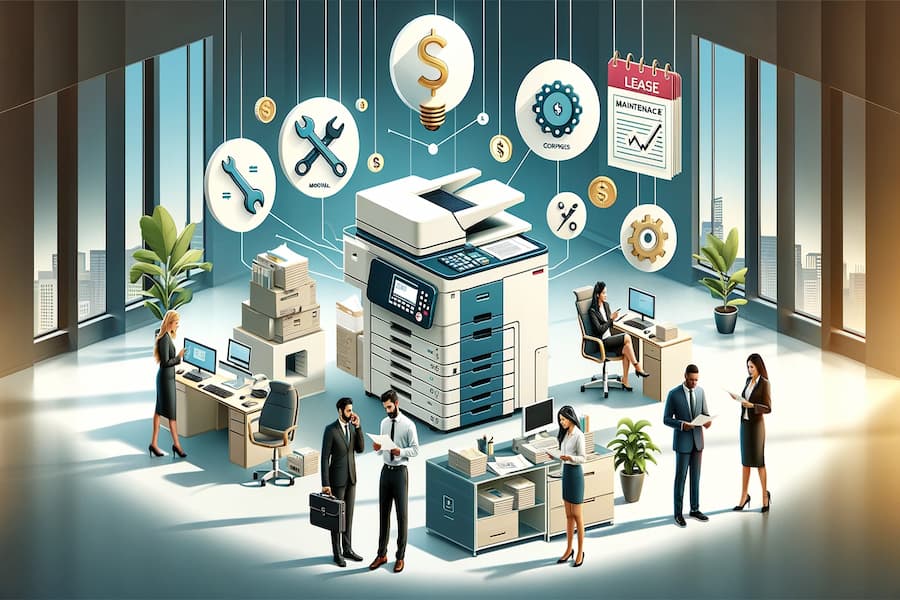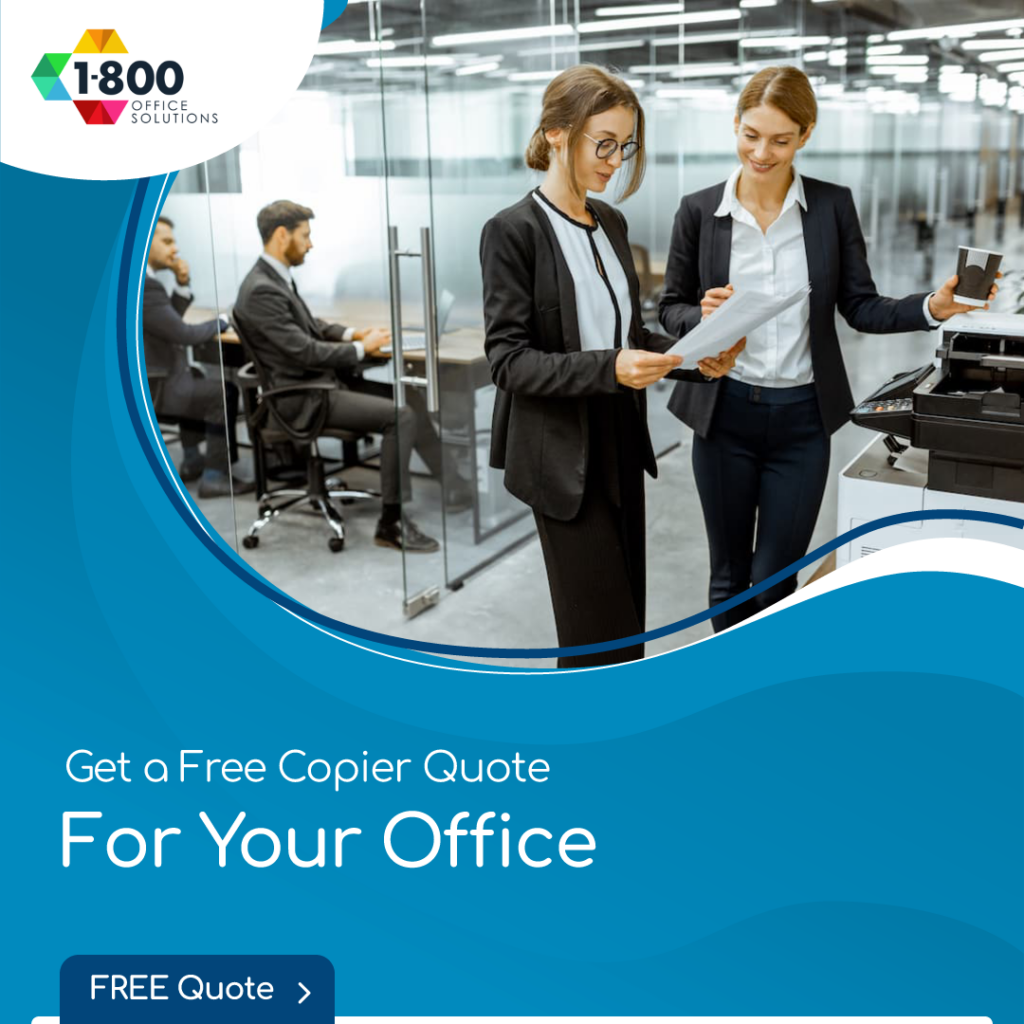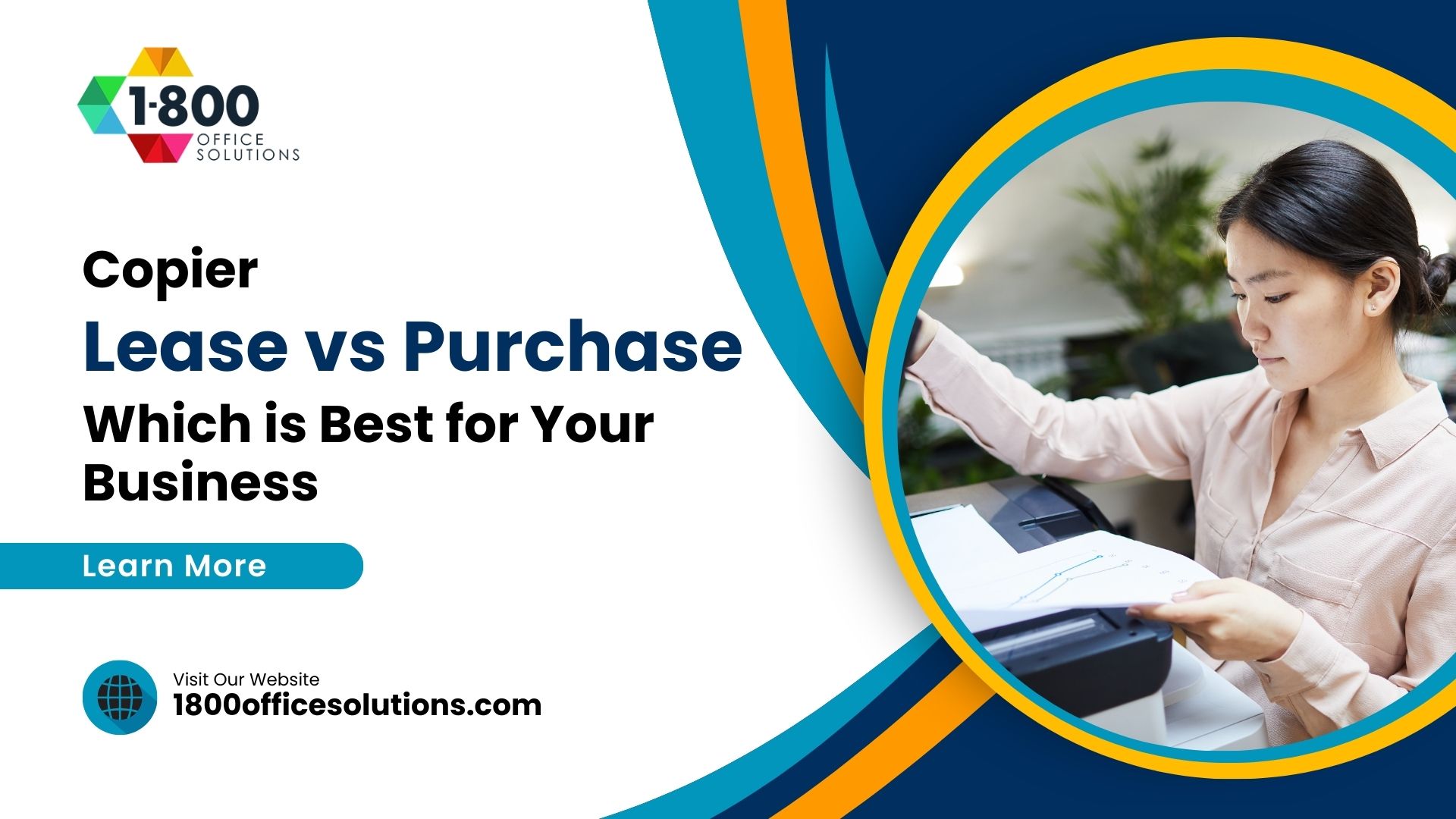Investing in Office Equipment: How Much Is Copy Machine and Is It Worth It?
How Much Is Copy Machine?
For every business, the copy machine stands as an indispensable tool, bridging the gap between digital and physical documentation. These machines, often taken for granted, play a pivotal role in daily operations, from printing important contracts to duplicating meeting notes.
However, a question that frequently arises is: how much does a copy machine cost? This article delves into the world of copy machines, exploring various types, the factors influencing their costs, and a look at some of the best models available in 2023.
Types of Copy Machines
Copy machines come in various forms, each catering to different needs and environments. Let’s explore the main types:
Inkjet Printers
- Pros: Known for their excellent photo printing quality, inkjet printers are ideal for color-intensive tasks. They are generally more affordable upfront and are excellent for low-volume printing.
- Cons: The cost of ink can add up over time, making them less economical for high-volume printing. They also tend to be slower than laser printers.
Laser Printers
- Pros: Laser printers are renowned for their speed and efficiency, especially in black-and-white printing. They offer lower per-page costs compared to inkjets, making them suitable for high-volume printing.
- Cons: The initial cost can be higher, and while they excel in document printing, they often fall short in photo quality compared to inkjets.
Commercial Copiers
- Pros: Designed for high-volume, these machines are robust and fast, capable of handling various paper sizes and types. They often include additional features like stapling and duplex printing.
- Cons: They are expensive and require significant office space. Maintenance can also be more complex.
Portable Copiers
- Pros: Ideal for small or home offices, these are compact and easy to move. They are perfect for low-volume needs and often come with wireless connectivity.
- Cons: Limited in speed and volume, these machines might not be suitable for larger businesses with more demanding printing needs.
Factors Influencing the Cost of Copy Machines
When considering a copy machine, several factors play a crucial role in determining its price:
Brand and Features
- Brands like HP, Canon, and Brother are synonymous with quality and reliability in the printer and copier market. However, brand reputation can influence the price.
- Features like wireless connectivity, duplex printing, and high print resolution can drive up costs.
Speed and Quality
- Print speed, measured in pages per minute (PPM), is a critical factor. Faster machines are typically more expensive.
- Print quality, especially for color and photo printing, can also affect the price. Higher resolution printers tend to cost more.
Total Cost of Ownership
- Consider not just the purchase price but also the long-term costs like ink or toner, maintenance, and repairs.
- Inkjet printers might have a lower upfront cost but can be more expensive in the long run due to ink costs.
Best Copy Machines of 2023
Let’s explore some of the top contenders in the market this year:
HP Color LaserJet Pro MFP
- Features: This all-in-one printer excels in print quality for both color and black-and-white documents. It includes features like an automatic document feeder and connectivity options like Wi-Fi and a flash drive.
- Price: The HP Color LaserJet Pro MFP offers a great balance between price and performance, making it a suitable choice for small to medium-sized offices.
Canon PIXMA TS8320
- Features: Known for its high-quality photo printing, this inkjet printer also includes features like scan and fax, making it versatile for home use.
- Price: While it might cost more upfront compared to other inkjets, its photo printing capabilities and connectivity options justify the price.
Brother MFC-L8900CDW
- Features: A robust choice for commercial settings, this printer offers high print speed and volume, making it ideal for businesses with heavy printing needs.
- Price: As a higher-grade commercial copier, its price reflects its advanced features and performance, suitable for larger offices or businesses.
The cost of a copy machine varies widely depending on its type, features, brand, and intended use. Whether you’re looking for a high-performance office copier or a compact home printer, there’s a machine out there to meet your needs and budget. Remember, the final price is not just about the initial purchase but also the total cost of ownership, including supplies and maintenance. Choose wisely to ensure that your investment pays off in efficiency and productivity for your business or personal use.
Cost vs. Quality
When investing in office equipment, particularly copy machines, the dilemma of cost versus quality often arises. It’s a common belief that higher cost equates to better quality, but is this always the case?
High Cost and Quality: A Direct Correlation?
- Higher-Grade Commercial Copiers: Often, higher-priced copiers offer advanced features like faster print speeds, higher print resolution, and durability. For instance, a commercial copy machine capable of handling thousands of pages per month, with advanced features like duplex printing and an automatic document feeder, typically comes at a higher price.
- Case Study: The HP Color LaserJet Pro MFP, known for its high print quality and speed, falls into a higher price range. However, its efficiency in handling large volumes and producing fine details in both black and white and color documents justifies its cost, especially in busy office environments.
Affordable Options: Compromising Quality?
- Inkjet Printers for Small Offices: Lower-cost options like inkjet printers are more suitable for small or home offices with less frequent printing needs. While they offer great photo printing and decent document quality, they might not match the speed and volume capabilities of their pricier counterparts.
- Example: The Canon PIXMA TS8320, an inkjet printer, offers excellent photo printing and good document quality at a more affordable price. However, it might not be as efficient as a high-end laser printer in an office setting with high-volume printing needs.
Conclusion
- Balancing Act: It’s crucial to balance cost and quality based on specific needs. A high-end printer might be overkill for a small office, while a basic inkjet might not suffice in a high-demand environment.
- Total Cost of Ownership: Remember, the initial purchase price is just part of the cost. Long-term expenses like ink or toner, maintenance, and potential repairs also play a significant role in determining the overall value.
Additional Costs to Consider
When purchasing a copy machine, it’s important to look beyond the sticker price. Several ongoing costs can affect the total cost of ownership.
Maintenance Costs
- Regular Servicing: To ensure longevity and efficiency, regular maintenance is essential, especially for high-end office copiers.
- Potential Repairs: Over time, parts may wear out and need replacement, which can be costly depending on the model and frequency of use.
Ink and Toner Expenses
- Inkjet Printers: While having a lower initial cost, inkjet printers require frequent ink cartridge replacements, especially if used regularly for photo printing or color documents.
- Laser Printers: Toner cartridges for laser printers tend to last longer, making them more cost-effective for high-volume printing.
Additional Considerations
- Paper Jams and Maintenance: Regular issues like paper jams require time and sometimes professional help to fix, adding to the overall cost.
- Connectivity Options: Features like wireless connectivity or the ability to print from a flash drive add convenience but can also add to the cost.
What People Also Ask
How Much Do Office Copier Machines Cost?
The price can vary widely, from a few hundred dollars for basic models to several thousand for high-grade commercial copiers. Factors like brand, features, and capabilities significantly influence the final price.
What Is the Difference Between Inkjet and Laser Printers?
- Inkjet Printers: Use liquid ink, ideal for photo printing and color documents. They are generally more affordable but can be costly in the long run due to ink expenses.
- Laser Printers: Use toner powder, better for high-volume and black-and-white printing. They offer faster print speeds and are more cost-effective over time.
How Often Do I Need to Replace Ink or Toner?
It depends on the printer model and usage. Inkjet printers might need more frequent replacements, especially if used for color printing. Laser printers, on the other hand, have toner cartridges that last longer, making them ideal for offices with regular printing needs.
What Should I Consider for a Small Office or Home Use?
For small or home offices, consider factors like space, printing volume, and connectivity options. An all-in-one printer that can print, scan, and fax might be ideal. Also, consider the cost of ink or toner and the average price range that fits your budget.
When investing in a copy machine, it’s essential to consider both the initial cost and the ongoing expenses. Balancing cost with quality, understanding the total cost of ownership, and choosing a machine that fits your specific needs will ensure that your investment is worthwhile, both in terms of performance and financial efficiency.
Conclusion
In the realm of office equipment, particularly copy machines, making an informed decision is crucial. It’s not just about the initial cost; it’s about understanding the long-term implications of your investment. The right copier can significantly enhance office productivity and efficiency, but it requires careful consideration of both upfront costs and ongoing expenses like maintenance, ink, and toner.
Remember, the most expensive option isn’t always the best for every situation. A high-end commercial copier might be overkill for a small office, while a more modest inkjet printer might not meet the demands of a busy corporate environment. The key is to assess your specific needs, including print volume, quality requirements, and the functionalities that will truly benefit your workflow.
Moreover, the total cost of ownership should always be a guiding factor in your decision-making process. This includes not only the purchase price but also the long-term costs associated with running and maintaining the machine. By carefully weighing these factors, you can ensure that your investment in a copy machine is both cost-effective and conducive to your business’s operational needs, ultimately leading to a more streamlined and productive office environment.













